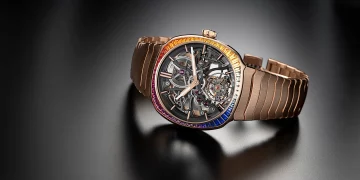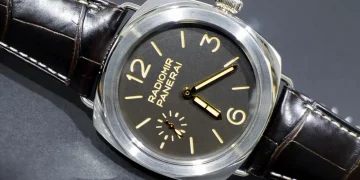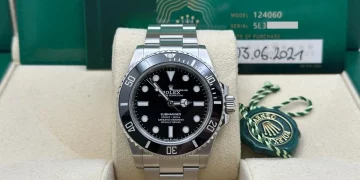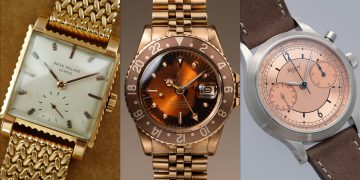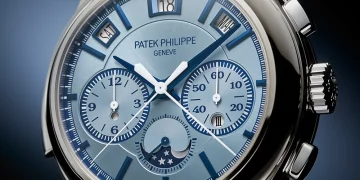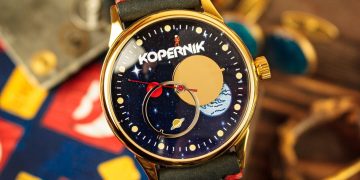Introduction:
The world of watchmaking has a long and rich history, shaped by centuries of craftsmanship, innovation, and tradition. Renowned watchmaking regions, such as Switzerland, Japan, and Germany, have developed their own unique approaches to creating timepieces, deeply rooted in their cultural heritage. However, with the rise of globalization over the past few decades, the watch industry has undergone significant changes. In many ways, the influence of globalization has reshaped the way watches are designed, manufactured, and marketed. But the question remains: Has globalization compromised the purity of traditional watchmaking cultures?
In this article, we will explore how globalization has impacted traditional horology, examining both the positive and negative aspects of this influence. We will look at how globalization has affected craftsmanship, innovation, branding, and consumer behavior in the watch industry and whether it has led to a dilution of the cultural identity of traditional watchmaking.
1. Globalization and the Rise of Mass Production
1.1 The Shift Toward Mass Production
Before the advent of globalization, watchmaking was primarily an artisanal craft. Skilled watchmakers worked in small workshops, handcrafting timepieces with great attention to detail. The watches they produced were often made in limited quantities, with each piece reflecting the unique touch of its maker. Swiss watchmaking, for example, was built on the principles of quality, craftsmanship, and heritage, where manual labor and precision were at the core of each timepiece’s creation.
However, with globalization came the shift toward mass production. As watch companies sought to increase their reach in global markets, there was a growing demand for affordable, mass-produced watches that could meet the needs of an expanding global consumer base. This shift had a profound impact on the traditional methods of production, as many manufacturers began adopting industrial techniques that prioritized speed and cost-efficiency over intricate craftsmanship.
Today, some brands that were once deeply tied to artisanal practices now operate large-scale factories that produce watches in high volumes. This transition has raised concerns that the essence of traditional watchmaking may be lost in the pursuit of mass-market appeal. While some prestigious Swiss brands still uphold their commitment to traditional hand-finishing and complicated movements, the presence of mass-produced watches has certainly become more prevalent in the market.
1.2 The Role of Technological Advancements
One of the driving forces behind the globalization of watchmaking is the incorporation of new technologies. Brands that once relied solely on handmade movements and traditional mechanisms have begun adopting advanced technologies to improve the precision, durability, and functionality of their watches. While this has allowed for the creation of high-performance timepieces, it has also raised concerns about the loss of the personal touch that was once a hallmark of traditional watchmaking.
The advent of quartz movements in the 1970s revolutionized the watch industry and drastically reduced the reliance on traditional mechanical movements. Quartz watches, which are cheaper to produce and offer better accuracy, flooded the market, forcing many traditional Swiss watchmakers to rethink their approach. In response, brands like Patek Philippe, Rolex, and Audemars Piguet chose to stick with mechanical movements, elevating them to a status symbol that embodied the heritage of craftsmanship. Nevertheless, the widespread use of quartz technology signified a shift toward industrialized horology, where precision and functionality often took precedence over artistry.
2. Global Branding and the Changing Face of Watchmaking
2.1 The Influence of Global Brands
As global markets grew, so did the power of global brands. Companies like Rolex, Omega, and Tag Heuer are recognized worldwide not just for the quality of their products but also for their brand identity. These brands have become more than just makers of watches; they are symbols of luxury, prestige, and success. The influence of branding, fueled by globalization, has shifted the focus of many consumers from the craftsmanship of a watch to the reputation of the brand itself.
This shift has altered the traditional understanding of luxury in watchmaking. Where once a luxury watch was defined by the quality of its construction and complicated movements, today it is just as much about the image and status associated with the brand. The luxury market is no longer solely concerned with the history or heritage of a brand but increasingly driven by marketing and the global demand for exclusive, high-end items.
The global branding and marketing strategies employed by watch companies have led to the homogenization of luxury watch culture, where designs and aesthetics may start to feel similar across brands. The traditional craftsmanship that once made each watch unique is sometimes overshadowed by the allure of owning a prestigious brand rather than appreciating the fine details of the watch itself.
2.2 The Rise of Digital Watches and Smartwatches
One of the most significant developments in the global watch market has been the rise of smartwatches, such as the Apple Watch, Samsung Galaxy Watch, and other wearable tech. While traditional watchmakers initially viewed these innovations as a threat, they have gradually embraced the digital revolution, with some high-end brands even collaborating with tech companies to create smart versions of their iconic watches.
The introduction of smartwatches has changed the role of watches in society. Whereas traditional watches were primarily seen as tools for telling time, digital watches have become multifaceted devices that serve as health trackers, communication tools, and personal assistants. This shift raises the question of whether traditional watchmaking, with its deep emphasis on mechanical craftsmanship, can maintain its relevance in an increasingly digital world.

3. The Preservation of Traditional Watchmaking in a Globalized World
3.1 Maintaining Craftsmanship and Heritage
Despite the challenges posed by globalization, many traditional watchmaking houses have remained committed to preserving their craftsmanship and heritage. Brands like Patek Philippe, Audemars Piguet, and Vacheron Constantin continue to prioritize manual labor, complicated movements, and intricate finishing in their timepieces. These companies have become custodians of the traditional art of horology, producing watches that are as much about craftsmanship as they are about luxury.
One way these companies have managed to stay true to their traditions is by emphasizing the handmade nature of their timepieces, ensuring that each watch is a work of art in its own right. This approach resonates with collectors who appreciate not just the technical aspects of a timepiece but also the story and heritage behind it. For example, Audemars Piguet’s Royal Oak has become an icon not just because of its design but because it represents a fusion of modernity and tradition, with every detail rooted in Swiss watchmaking heritage.
Moreover, the advent of the internet and social media has allowed these brands to communicate their heritage directly to a global audience. Through storytelling, documentaries, and behind-the-scenes footage, traditional watchmakers have been able to emphasize the value of craftsmanship and the time-honored techniques that define their products.
3.2 Embracing Innovation While Honoring Tradition
While some argue that globalization has diluted the purity of traditional watchmaking, others see it as an opportunity for innovation that can enhance the craft. Brands that have embraced technology, such as Jaeger-LeCoultre, Breguet, and Omega, have managed to blend traditional craftsmanship with cutting-edge technologies to create timepieces that honor their heritage while pushing the boundaries of what is possible in watchmaking.
The incorporation of new materials (such as ceramics and titanium) and the development of advanced movements (like the Silicon escapement and tourbillons) demonstrate how traditional watchmaking can evolve without losing its core values. These innovations allow brands to create watches that are not only visually stunning but also technically advanced, giving collectors a sense of both heritage and progress.
4. Conclusion: The Ongoing Evolution of Watchmaking
Globalization has undoubtedly influenced traditional watchmaking, reshaping the industry in ways that affect craftsmanship, branding, and design. While mass production, digital innovation, and global marketing have changed the dynamics of the market, they have not erased the essence of what makes traditional watchmaking unique. Many watchmakers continue to prioritize craftsmanship, heritage, and quality, ensuring that their timepieces remain true to the cultural traditions that have defined them for centuries.
At the same time, the fusion of innovation and tradition is becoming increasingly important in maintaining the relevance of watchmaking in a globalized world. Traditional horology is evolving, but it is not necessarily losing its purity. Instead, it is adapting to the demands of a changing market while preserving the values that have made it so enduring.
Ultimately, the challenge for modern watchmakers is to balance heritage with innovation, ensuring that they honor the legacy of traditional watchmaking while also embracing the globalized market that continues to shape the future of horology.






